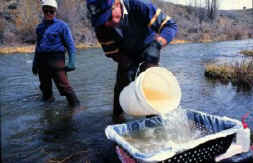 Slide 1: Filtering water on the Colorado River. We typically can filter 500 gallons of water through a 20 micron mesh filter in 15 minutes, concentrating the spores filtered in 50 - 150 milliters of water. Slide 1: Filtering water on the Colorado River. We typically can filter 500 gallons of water through a 20 micron mesh filter in 15 minutes, concentrating the spores filtered in 50 - 150 milliters of water. |  Slide 2: Triactinomyxon actinospores of Myxobolus cerebralis stained with crystal violet biological stain and viewed under 50 power with a stereozoom binocular dissecting microscope. Slide 2: Triactinomyxon actinospores of Myxobolus cerebralis stained with crystal violet biological stain and viewed under 50 power with a stereozoom binocular dissecting microscope. |
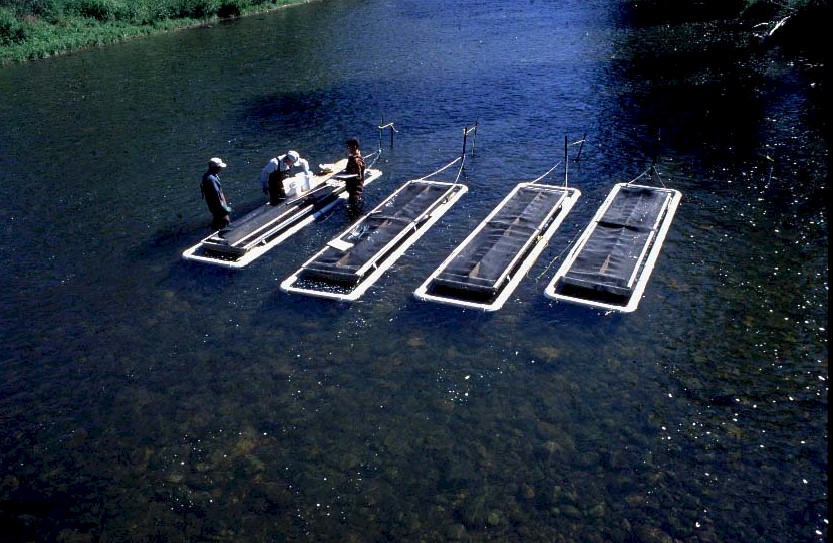 Slide 3: Sentinel fish held in tanks in infected areas of the Colorado River helped the CPW to determine what species and sizes of trout were most vulnerable to whirling disease. Slide 3: Sentinel fish held in tanks in infected areas of the Colorado River helped the CPW to determine what species and sizes of trout were most vulnerable to whirling disease. | 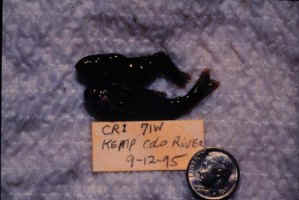 Slide 4: Severely crippled Colorado River cuttthroat trout approximately 60 days post exposure to ambient levels of triactinomyxon spores in the upper Colorado River (July - September 1995). Slide 4: Severely crippled Colorado River cuttthroat trout approximately 60 days post exposure to ambient levels of triactinomyxon spores in the upper Colorado River (July - September 1995). |
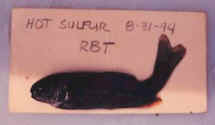 Slide 5: Wild free-ranging rainbow trout fry captured in the upper Colorado River in late August 1994, exposed to ambient levels of triactinomyxon spores for approximately 60 days. Hatching and emergence of wild rainbow trout in the upper Colorado River occurs between June 20 and July 15 each summer. |  Slide 6: Age 1+ and 2+ brown trout with deformities of the vertebral column and black tail, resulting from exposure to ambient levels of TAM spores in the upper Colorado River. |
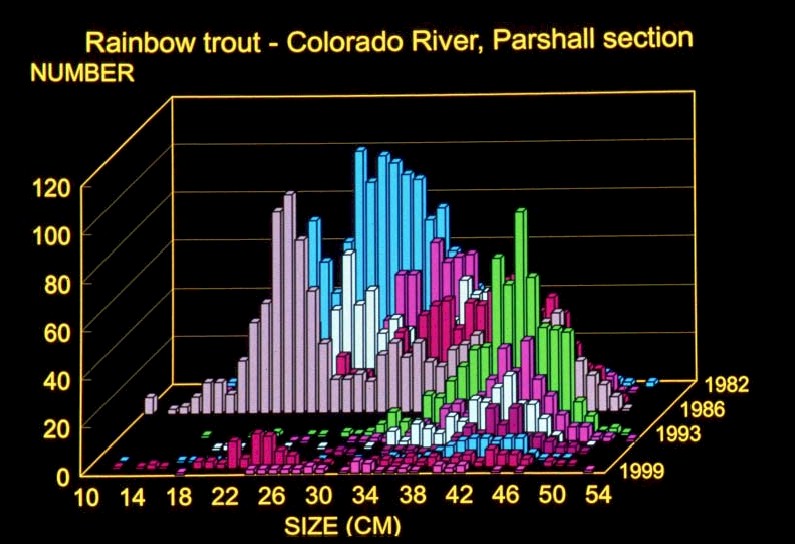 Slide 7: Comparative changes in the abundance of wild rainbow trout in a two mile reach of the upper Colorado River between 1982-1986 (pre-whirling disease period), and 1993-1999 (post-whirling disease period). Slide 7: Comparative changes in the abundance of wild rainbow trout in a two mile reach of the upper Colorado River between 1982-1986 (pre-whirling disease period), and 1993-1999 (post-whirling disease period).
|  Slide 8: These severed fish heads were lying in a high country stream near the Continental divide. Since fish heads are the major location for mature spores that will infect a new generation of worms, this method of disposal may contribute to the spread of whirling disease. Slide 8: These severed fish heads were lying in a high country stream near the Continental divide. Since fish heads are the major location for mature spores that will infect a new generation of worms, this method of disposal may contribute to the spread of whirling disease. |

